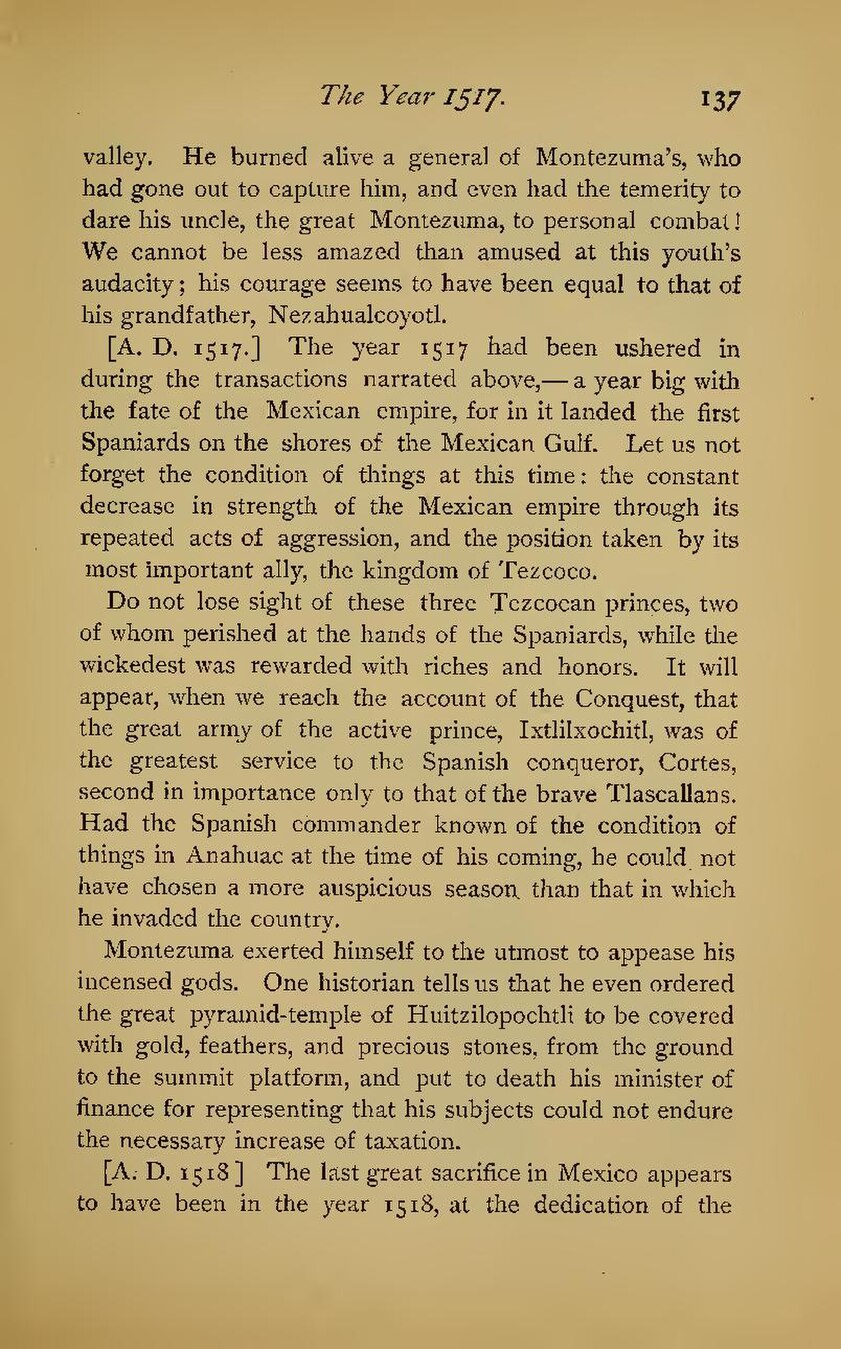valley. He burned alive a general of Montezuma's, who had gone out to capture him, and even had the temerity to dare his uncle, the great Montezuma, to personal combat! We cannot be less amazed than amused at this youth's audacity; his courage seems to have been equal to that of his grandfather, Nezahualcoyotl.
[A. D. 1517.] The year 1517 had been ushered in during the transactions narrated above,—a year big with the fate of the Mexican empire, for in it landed the first Spaniards on the shores of the Mexican Gulf. Let us not forget the condition of things at this time: the constant decrease in strength of the Mexican empire through its repeated acts of aggression, and the position taken by its most important ally, the kingdom of Tezcoco.
Do not lose sight of these three Tezcocan princes, two of whom perished at the hands of the Spaniards, while the wickedest was rewarded with riches and honors. It will appear, when we reach the account of the Conquest, that the great army of the active prince, Ixtlilxochitl, was of the greatest service to the Spanish conqueror, Cortes, second in importance only to that of the brave Tlascallans. Had the Spanish commander known of the condition of things in Anahuac at the time of his coming, he could not have chosen a more auspicious season than that in which he invaded the country.
Montezuma exerted himself to the utmost to appease his incensed gods. One historian tells us that he even ordered the great pyramid-temple of Huitzilopochtli to be covered with gold, feathers, and precious stones, from the ground to the summit platform, and put to death his minister of finance for representing that his subjects could not endure the necessary increase of taxation.
[A. D. 1518 ] The last great sacrifice in Mexico appears to have been in the year 1518, at the dedication of the
